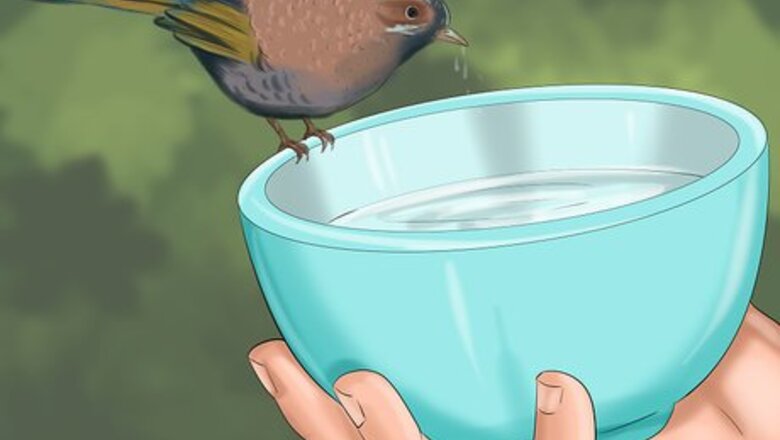
views
Making Emergency Food
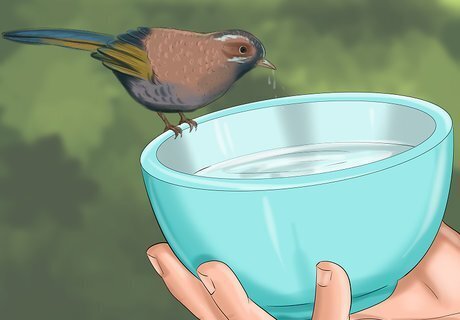
Do not give a nestling water. A bird's larynx is poorly protected, so a bird can drown if you put water into its mouth. Birds get plenty of water through the appropriate food source for their species, so it is not necessary to supplement their diet with water. Doing so can be fatal.
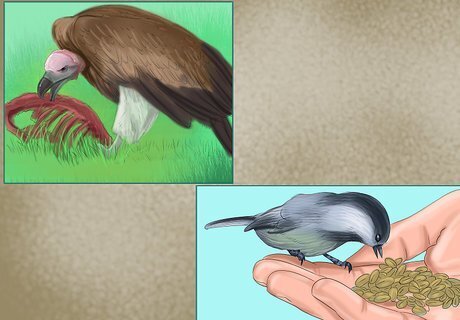
Identify the bird's species. Before you can feed a nestling, you need to know what kind of bird it is. Different types of birds eat different types of food. For example, some birds eat only seeds, while others eat only insects and worms. Other birds, like vultures, are meat-eaters. If you feed a seed-eater a diet of worms, he will die. It is very important to identify the species before attempting an emergency feeding. For help identifying your bird's species, visit http://www.babybirdid.com/, where you can view a gallery of images of common nestlings. If you have a large social network on Facebook or Twitter, you can also try posting a picture of the baby bird and asking for help with an identification. When you get a response, be sure to do a Google image search to verify that the identification is correct. Once you have identified the bird, you need to search the internet or a reliable reference book for information about that species' diet. For example, if you have found a baby chickadee, an internet search for "what do chickadees eat" or "chickadee diet" will tell you that they mostly eat insects but also like some seeds.
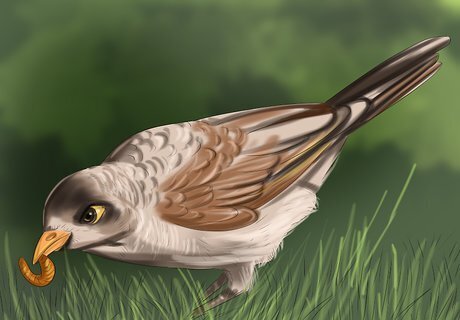
Feed songbirds appropriately. Songbirds are the most typical kind of bird you'll encounter. Most songbird nestlings eat insects, but some, like house finches, don't. For insect eaters: chopped mealworms (available at pet stores) or insects like flies, crickets, grasshoppers, and moths. You can supplement the insects with chopped, cooked, and cooled to room temperature hard-boiled eggs.
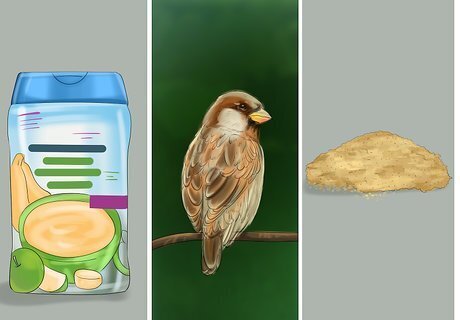
Feed seed eaters the right food. Seed eaters tend to be the smaller birds (sparrows, chickadees, doves, etc). Feed seed-eaters high protein dry infant cereal mixed with water (for example, Gerber brand baby oatmeal), wheat germ, corn or oatmeal that has been powdered in the blender.
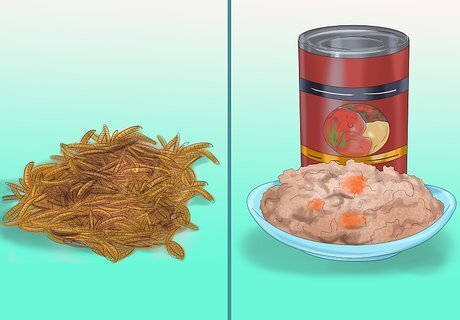
Feed meat eaters the right food. Meat-eating birds tend to be the biggest ones, birds of prey like falcons and so on. They will need to be fed even more frequently than the smaller birds and are more dangerous to handle, but they are also the ones you're least likely to encounter. Feed them high protein dry kitten or dog food that has been soaked in water so that it is soft, or canned pureed meats prepared for infants such as chicken or beef. You can also feed them boiled chicken or live insects like flies and mealworms.
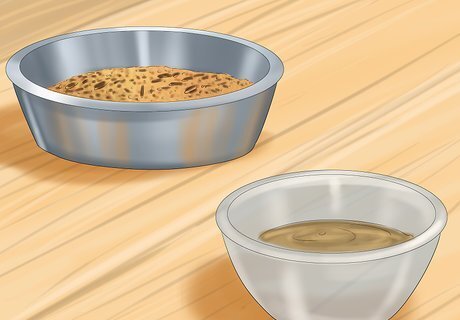
Avoid mixing batches of food more than a day ahead of time. Otherwise the food will go bad and will harm, or even kill the baby bird. Remember that caring for a baby bird requires a lot of work and energy and you'll be mixing a lot of batches of food. Mix up the amount of bird food that you will need for one feeding at a time-- generally just a few teaspoons for a small bird. Remember that most baby birds eat food that has been digested and regurgitated by their parents, so keep the consistency wet but not liquidy.
Deciding if a Baby Bird Needs Help
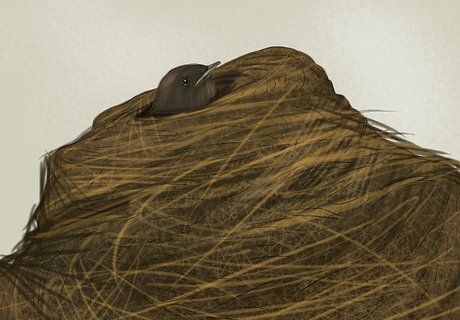
Notice if the baby is a nestling or a fledgling. Depending on its developmental stage, a baby bird may need your help or it may be practicing important life skills and your "help" would actually interfere with this natural process. A nestling is a pink, newborn bird who has not yet grown any flight feathers, while a fledgling is more like a toddler: fledglings have grown some of their adult feathers and are beginning to practice the skills needed for survival as an adult, including foraging for food and flying for short distances. If you see a nestling on the ground, it has probably fallen or been kicked out of its nest by its parents. You will need to place it back into its nest. A fledgling, on the other hand, may have flown to the ground and is probably practicing important skills like foraging for insects. You should not attempt an immediate rescue of a fledgling bird, but instead observe it from a distance (inside your house if possible) to see if the parents are nearby. In some cases, the fledgling will practice living on the ground, hopping around for days or even weeks! Keep children and pets away and let it be.
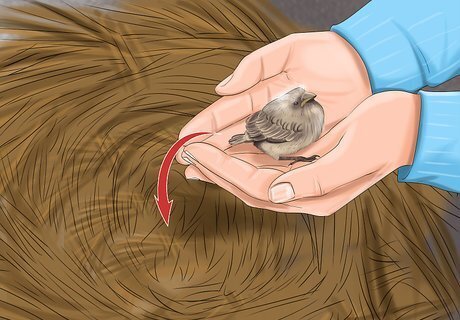
Return a nestling to its nest. When you find a baby bird on the ground, look up in trees or bushes directly around where it was found. It most likely fell or blew out of its nest. If you locate a nest, look inside for other baby birds of the same type to be sure that you've found the right nest. You may be worried that the mother bird won't care for its baby if it has been handled by humans, but that is actually a myth. Most birds have a poor sense of smell, so they won't pay much attention to your smell. Put on gloves or use a tea towel or infant blanket to very gently pick up the baby bird. This protects the bird from your germs and also protects you from pecks or scratches as well as mites that live on wild birds.
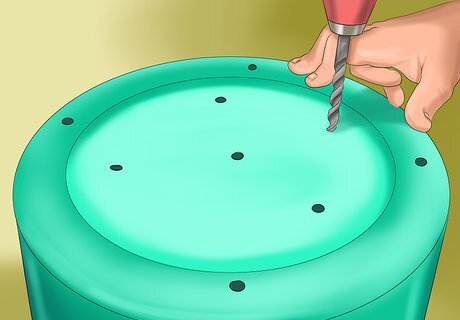
Make a makeshift nest if the nest has fallen. If the nest has fallen out of the tree and is nearby on the ground, you should gather as much of it as you can and place it into a plastic container that is about the same size of the original nest. If there is no nest material or very little, you can add shredded paper towels. You will need to secure this new nest into the tree. Drill a couple of holes in the bottom of the container for drainage, then nail the plastic container up in the closest tree. Very gently place the nestling inside the new makeshift nest (using gloves or a small blanket or towel to lift the bird).
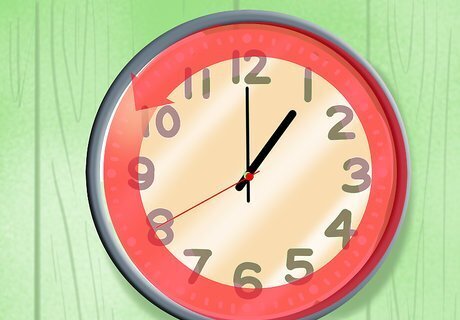
Wait at least a day. Birds come and go from their nests, and the parents may have seen you fussing around their baby and might be staying away out of fear you'll return. If you don't see a parent bird immediately that doesn't mean that the parent bird isn't coming back. If no parents have been observed after a day, it may have been abandoned and you will need to get it to the proper authorities to care for it.
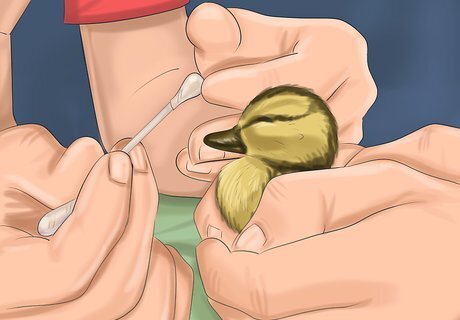
Call a licensed wildlife rehabilitator immediately. Nestlings require a very specific diet depending on their species, and most baby birds who die have been taken in by well-meaning people who try to feed them but effectively poison them instead by giving them the wrong diet. It is also illegal in the United States to attempt to raise a wild animal without a license. It's very important to contact someone who is trained to deal with a baby bird. If there is no rehabilitator close by (or if they are closed, for example on the weekend) and the parent birds have absolutely abandoned the baby, that is the only time you should attempt to feed and care for a nestling. Consider this: if you make a wrong guess at the species or dietary requirements of the bird, you may kill it. Only risk feeding it if it is definitely going to die without your intervention. Remember, birds can go 24 hours without eating, so avoid feeding it unless absolutely necessary.
Caring for the Bird
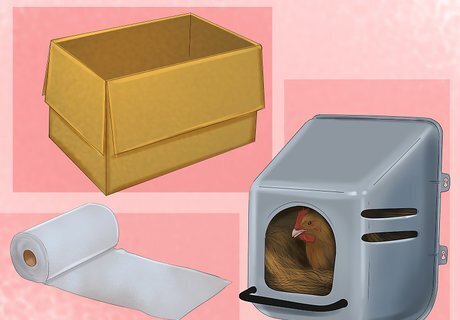
Place the bird in a temporary home. You can use a shoebox padded with paper towels or, if you tried using a plastic nest, you can repurpose it for a temporary home by placing the entire nest into the box. Make sure that the sides of the box are high enough that the bird cannot hop out (they can hop higher than you think, so overestimate to be safe!). Keep the box inside your home where it is warm, out of direct sunlight and in a quiet area away from noisy children or pets.
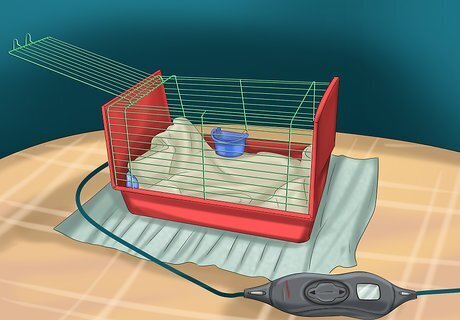
Keep the bird warm. The most important thing you can do when caring for a baby bird is to keep it warm. As said before, a baby bird can go for 24 hours without food, but they desperately need warmth, especially if they've been injured or traumatized. One way to keep the bird warm is to place a heating pad set on low under one end of its box. Never place the bird directly on the heating pad as that can overheat it. Instead, wrap the heating pad in a shirt or cloth and keep it beneath the bird. You can also use a hot water bottle wrapped in a cloth and placed into the bird's box, but be sure that the bottle will not leak as this will get the bird wet and cause it to become chilled.
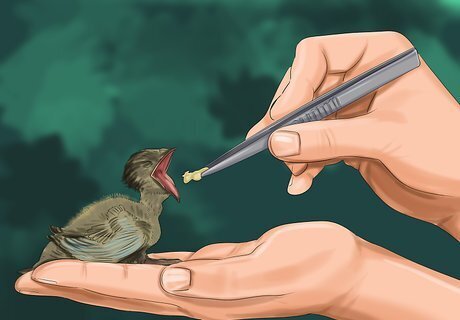
Feed the bird consistently. Baby birds need to be fed at about 30 minute intervals from dawn to dusk-- and some require even more feeding, up to every ten minutes! You have to put the food into the bird’s mouth; it won’t eat it if it is just there in the temporary nest. Don’t pry open the bird’s mouth. If it is hungry it will open its mouth for you. Try to have only one person care for the bird and feed it as this will limit its contact with humans and help to feel safe.
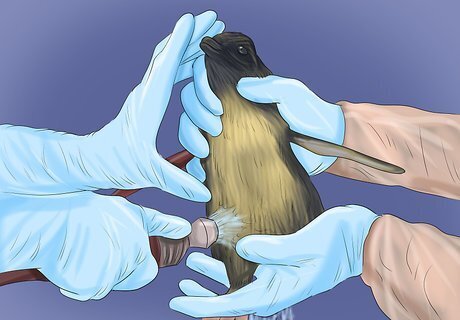
Clean up after the bird. Once the bird has been taken by a rehabilitator or you've reintroduced it to the wild, you need to sanitize the area where it stayed (or better yet, throw the whole box away). Wild birds have mites that can infest your home, and bird droppings can spread disease. Also be sure to wash your hands very thoroughly after handling the bird.


















Comments
0 comment